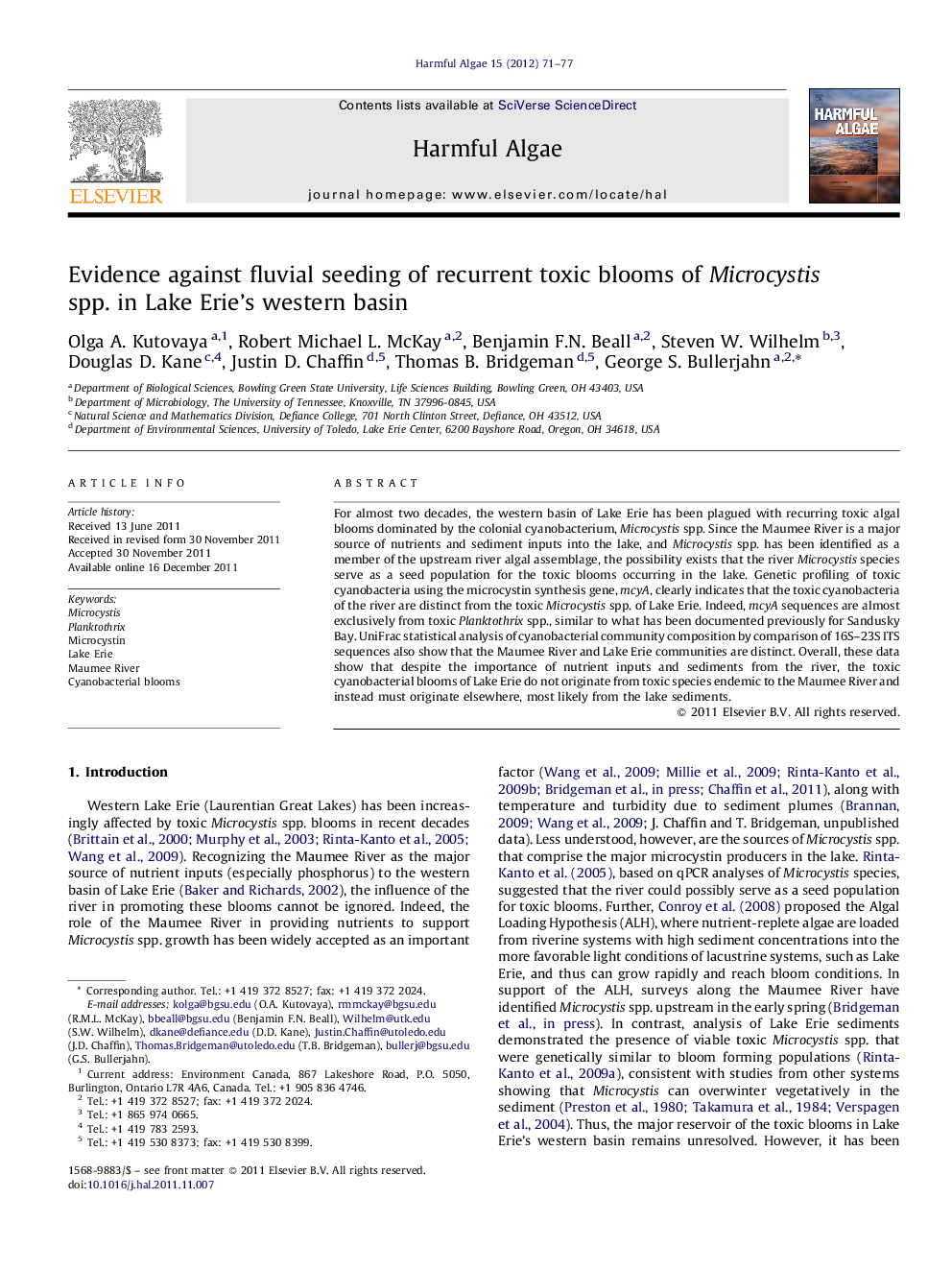| Article ID | Journal | Published Year | Pages | File Type |
|---|---|---|---|---|
| 4545568 | Harmful Algae | 2012 | 7 Pages |
For almost two decades, the western basin of Lake Erie has been plagued with recurring toxic algal blooms dominated by the colonial cyanobacterium, Microcystis spp. Since the Maumee River is a major source of nutrients and sediment inputs into the lake, and Microcystis spp. has been identified as a member of the upstream river algal assemblage, the possibility exists that the river Microcystis species serve as a seed population for the toxic blooms occurring in the lake. Genetic profiling of toxic cyanobacteria using the microcystin synthesis gene, mcyA, clearly indicates that the toxic cyanobacteria of the river are distinct from the toxic Microcystis spp. of Lake Erie. Indeed, mcyA sequences are almost exclusively from toxic Planktothrix spp., similar to what has been documented previously for Sandusky Bay. UniFrac statistical analysis of cyanobacterial community composition by comparison of 16S–23S ITS sequences also show that the Maumee River and Lake Erie communities are distinct. Overall, these data show that despite the importance of nutrient inputs and sediments from the river, the toxic cyanobacterial blooms of Lake Erie do not originate from toxic species endemic to the Maumee River and instead must originate elsewhere, most likely from the lake sediments.
► Maumee River has been suspected as the source of toxic Microcystis in Lake Erie. ► Distinctly different river and Lake Erie cyanobacterial communities are detected. ► The Lake Erie toxic blooms do not originate from algae in the river.
